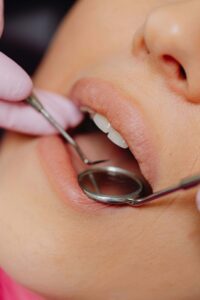Ever wondered what an orthodontist does or how they differ from a regular dentist?
Many people are unsure about the specific roles and benefits of orthodontic care. What exactly is the difference between an orthodontist and a dentist?
This blog post aims to clarify these questions and highlight the importance of orthodontic treatment for various age groups, from kids to adults. By the end, you’ll understand why seeing an orthodontist is one of the best things you can do for your dental health and overall well-being.
Introduction to Orthodontics
Orthodontics is a specialized branch of dentistry that focuses on the alignment of teeth and jaws.
Orthodontists are highly trained dental professionals who specialize in treating misaligned teeth, overbites, underbites, crossbites, and other orthodontic issues.
Unlike regular dentists, who primarily focus on overall oral health and hygiene, orthodontists have additional years of education and training to specifically address the alignment of teeth and jaws.
This makes them experts in diagnosing and treating various orthodontic problems.
What Defines an Orthodontist?
To become an orthodontist, a dentist must complete an additional two to three years of specialized training after completing dental school.
This program involves learning various techniques and using different tools to correct teeth and jaw misalignment.
Only after this intensive training can a dentist earn the title of “orthodontist” and be recognized as an expert in the field.
Difference Between a Dentist and an Orthodontist
While both dentists and orthodontists are dental professionals, there are key differences between the two.
Dentists focus on overall oral health, including teeth cleaning, cavity fillings, and root canals. They also provide routine check-ups to ensure the health of your mouth and diagnose any potential issues.
On the other hand, orthodontists specialize in correcting misaligned teeth and jaws through various methods such as braces, aligners, and retainers. They also have extensive knowledge in how facial muscles and bones affect tooth alignment.
Services Offered by Orthodontists
So, what does an orthodontist do though? Orthodontists provide a wide range of services to help patients achieve a straight and healthy smile. Some of the most common treatments and types of braces include:
- Traditional metal braces: This is the most common form of orthodontic treatment, where metal brackets are attached to the teeth and connected with wires.
- Ceramic or clear braces: These work similarly to traditional braces but use clear or tooth-colored brackets for a more discreet appearance.
- Invisalign aligners: These are clear, removable aligners that gradually shift teeth into proper alignment.
- Retainers: After completing orthodontic treatment, retainers are used to maintain the new alignment of teeth and prevent them from shifting back.
Benefits of Orthodontic Treatment
Orthodontic treatment offers many benefits, both for oral health and overall well-being. Here are some of the key advantages:
- Improved appearance and self-confidence: Having a straight smile can boost one’s self-esteem and improve their overall appearance.
- Better oral health: Straight teeth are easier to clean, reducing the risk of tooth decay, gum disease, and other dental issues.
- Proper jaw alignment: Orthodontic treatment can help correct misaligned jaws, improving chewing ability and preventing TMJ disorders.
When Should You See an Orthodontist?
Orthodontic treatment is not just for children and teens. In fact, people of all ages can benefit from orthodontic care. Some common signs that you or your child may need to see an orthodontist include:
- Crowded, crooked, or overlapping teeth
- Difficulty chewing or biting
- Pronounced overbite or underbite
- Mouth breathing due to jaw misalignment
- Early loss of baby teeth or delayed eruption of adult teeth
If you notice any of these issues, it’s best to schedule a consultation with an orthodontist as soon as possible.
Choosing the Right Orthodontist
Selecting the right orthodontist is a crucial step in ensuring you receive the best possible care for your orthodontic needs. Begin by researching local orthodontists, noting their qualifications, experience, and areas of expertise.
Online reviews and testimonials from previous patients can provide valuable insight into the quality of care offered. Additionally, consider the orthodontist’s office environment—modern, clean facilities with friendly staff can make a significant difference in your overall experience.
Don’t hesitate to ask friends, family, or your regular dentist for recommendations, as personal referrals often lead you to highly regarded professionals.
Once you have narrowed down your options, schedule consultations with a few orthodontists.
During these visits, pay attention to how comfortable you feel and how aligned their communication style is with your preferences. Ask questions about the treatment options they offer, the technologies they use, and the anticipated timeline for your specific case.
Taking the time to make an informed decision can lead to a more positive outcome and a successful orthodontic experience.
Conclusion
Now that you understand what an orthodontist is, you can see just how important orthodontic care is for maintaining dental health and achieving a beautiful smile. If you’re considering orthodontic treatment, sooner is always better than later.
Schedule a consultation with an orthodontist to discuss your options and take the first step towards a straighter, healthier smile. Remember, proper alignment not only enhances your appearance but also contributes to overall well-being.
Don’t wait any longer to achieve the smile you deserve. Schedule a free consultation with us here at My Smile Orthodontics today and take the first step towards a healthier, more confident you.












